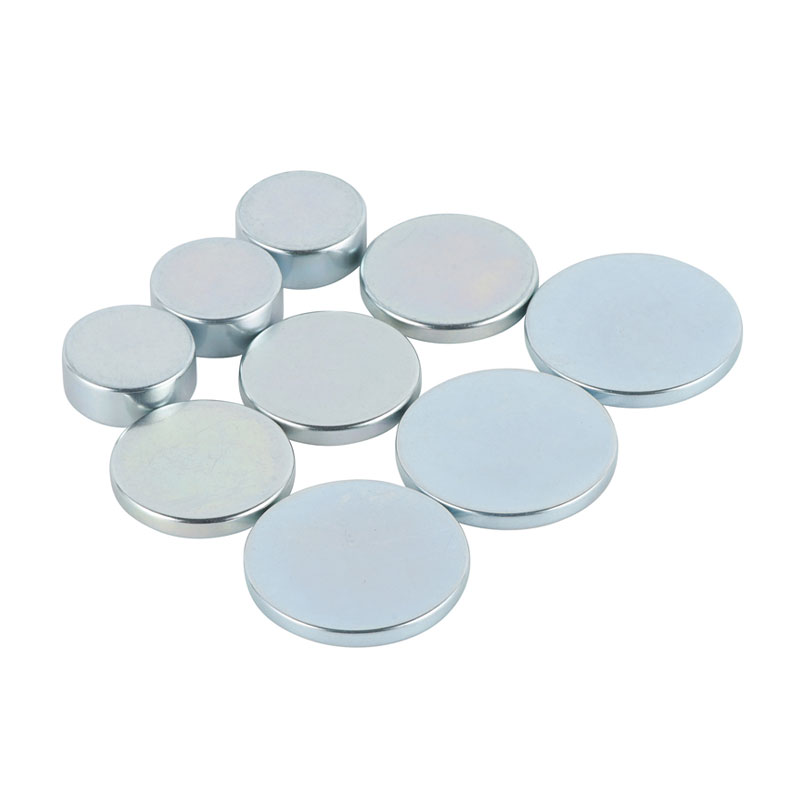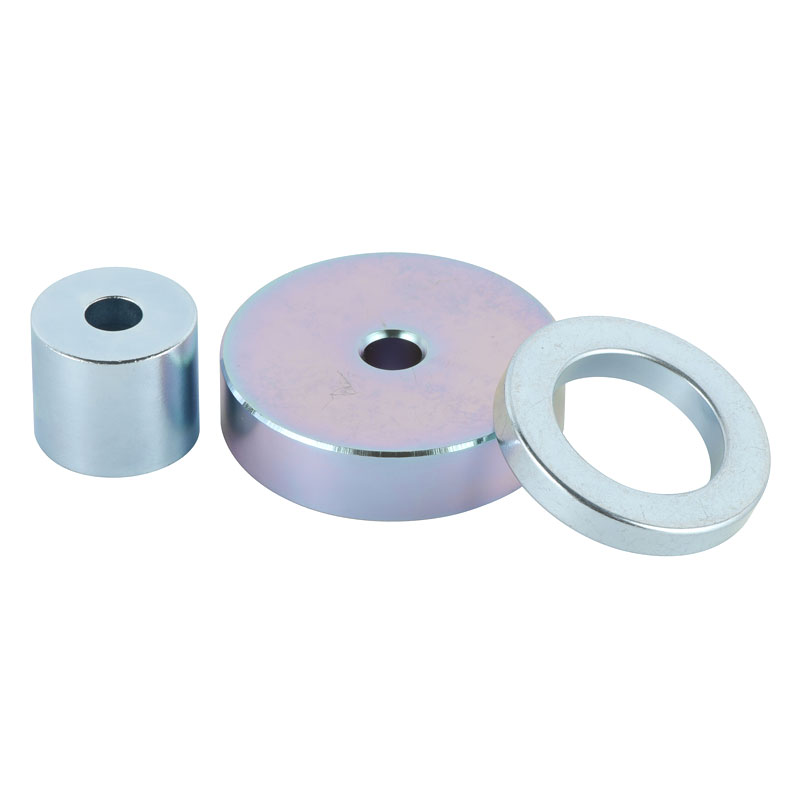Why Choose Sintered NdFeB Magnets for Consumer Electronics?
In the fast-paced world of consumer electronics—where devices like smartphones, wireless earbuds, smartwatches, and laptops are getting smaller, lighter, and more powerful—component selection is critical. Magnets play an invisible yet vital role in these devices, enabling functions like speaker audio, motor operation, and sensor accuracy. Among various magnet types, sintered NdFeB (neodymium-iron-boron) magnets have emerged as a top choice for manufacturers. But what makes them stand out in consumer electronics? This article will explore key questions about sintered NdFeB magnets, uncovering how their unique properties align with the demands of modern electronic devices.
1. What Magnetic Strength Advantages Make Sintered NdFeB Magnets Suitable for Compact Electronics?
One of the biggest challenges in consumer electronics design is packing powerful functionality into tiny spaces. Sintered NdFeB magnets’ exceptional magnetic strength directly addresses this need, making them ideal for compact devices.
Sintered NdFeB magnets are the strongest permanent magnets commercially available—their maximum energy product (a measure of magnetic strength, denoted in MGOe) ranges from 28 MGOe to over 50 MGOe, far exceeding other magnet types like ferrite or samarium-cobalt. This means a small sintered NdFeB magnet can generate the same magnetic force as a much larger ferrite magnet. For example, in wireless earbuds, a tiny sintered NdFeB magnet in the speaker driver can produce clear, loud audio without taking up valuable space—critical for keeping the earbuds lightweight and comfortable. In smartphone vibration motors, a compact sintered NdFeB magnet delivers strong, responsive haptic feedback while fitting into the device’s slim chassis.
Without this high magnetic strength, devices would either be bulkier (to accommodate larger magnets) or less functional (with weaker speakers or motors). Sintered NdFeB magnets let manufacturers strike the perfect balance between size and performance—essential for today’s sleek consumer electronics.

2. How Do Sintered NdFeB Magnets’ Size and Weight Benefits Fit Consumer Electronics Design Trends?
Consumer electronics trends like “ultra-slim,” “lightweight,” and “portable” demand components that minimize size and weight without sacrificing performance. Sintered NdFeB magnets excel here, thanks to their high strength-to-weight ratio.
As mentioned earlier, their strong magnetic force allows for smaller magnet sizes. A sintered NdFeB magnet used in a smartwatch’s step-counting sensor, for instance, can be as small as a grain of rice while still accurately detecting movement. This miniaturization frees up space for other critical components, like larger batteries or more advanced processors. Additionally, sintered NdFeB magnets are relatively lightweight compared to alternatives like samarium-cobalt (which is denser) or ferrite (which requires larger volumes to match strength). For devices like laptops or tablets—where weight affects portability—using lighter sintered NdFeB magnets helps keep the overall device weight down.
In an era where consumers prioritize devices that fit in pockets or bags and feel comfortable to hold, the size and weight advantages of sintered NdFeB magnets make them a natural choice for electronics manufacturers.
3. What Temperature Stability Do Sintered NdFeB Magnets Offer for Everyday Electronic Use?
Consumer electronics are used in a wide range of environments—from cold winter days outdoors to warm summer afternoons in a car. Magnets must maintain their performance across these temperature fluctuations to ensure device reliability. Sintered NdFeB magnets, when properly graded, deliver the temperature stability needed for everyday use.
Different grades of sintered NdFeB magnets are designed to withstand varying temperature ranges. For most consumer electronics (which operate between -40°C and 120°C), standard grades (like N35SH or N42UH) work perfectly. These grades retain over 90% of their magnetic strength at 80°C—well within the temperature range of devices like smartphones (which typically reach 40-60°C during heavy use, such as gaming or video streaming) or smartwatches (worn on the wrist, exposed to body heat around 37°C). Even in more extreme cases (e.g., a laptop left in a warm car), high-temperature grades of sintered NdFeB magnets (like N48EH, which withstands up to 180°C) can be used to ensure stability.
This temperature resistance prevents devices from experiencing performance drops—like distorted speaker audio or unresponsive haptics—when used in different environments, keeping electronics reliable for daily use.

4. How Do Sintered NdFeB Magnets Support Energy Efficiency in Battery-Powered Electronics?
Most consumer electronics are battery-powered, so energy efficiency is a top priority—users want devices that last longer between charges. Sintered NdFeB magnets contribute to energy efficiency by optimizing the performance of key components like motors and sensors.
In small motors (e.g., the fan in a laptop or the camera autofocus motor in a smartphone), sintered NdFeB magnets’ strong magnetic force allows the motor to generate more torque with less electrical power. This means the motor uses less battery to operate, extending the device’s battery life. For example, a smartphone’s camera motor with a sintered NdFeB magnet can focus faster and use less energy than one with a weaker magnet, helping the phone last longer during photo-heavy use. In sensors (like the proximity sensor in a smartphone that turns off the screen during calls), sintered NdFeB magnets’ consistent magnetic field ensures the sensor operates with minimal power, further reducing energy consumption.
For consumers who rely on their electronics throughout the day, the energy efficiency benefits of sintered NdFeB magnets translate to fewer trips to the charger— a key selling point for any device.
5. What Customization Options Make Sintered NdFeB Magnets Adaptable to Diverse Electronic Components?
Consumer electronics include a wide range of components—from tiny speaker drivers in earbuds to larger motors in laptops—each with unique shape and size requirements. Sintered NdFeB magnets offer extensive customization options, making them adaptable to nearly any electronic component.
During manufacturing, sintered NdFeB magnets can be shaped into complex forms: thin discs (for sensors), small cylinders (for earbud speakers), rectangular blocks (for laptop fans), or even custom shapes (to fit odd-sized spaces in devices). They can also be coated with materials like nickel-copper-nickel or epoxy to resist corrosion—critical for devices used in humid environments (like smartwatches worn during workouts) or exposed to sweat (like wireless earbuds). Additionally, manufacturers can adjust the magnetic orientation of sintered NdFeB magnets (e.g., axial or radial magnetization) to match the specific needs of the component—ensuring the magnet’s force is directed exactly where it’s needed.
This level of customization means sintered NdFeB magnets can be tailored to fit almost any consumer electronic component, regardless of its size, shape, or function—making them a versatile choice for manufacturers.
6. How Do Sintered NdFeB Magnets Balance Performance and Cost for Mass-Produced Electronics?
Consumer electronics are mass-produced, so components must offer high performance at a reasonable cost to keep device prices accessible. Sintered NdFeB magnets strike this balance, making them economically viable for large-scale production.
While sintered NdFeB magnets are more expensive than basic ferrite magnets, their high strength means fewer magnets (or smaller magnets) are needed per device—offsetting the higher per-unit cost. For example, a single small sintered NdFeB magnet can replace multiple ferrite magnets in a speaker, reducing the total component cost. Additionally, advancements in sintered NdFeB manufacturing (like improved powder processing and automated shaping) have lowered production costs over time, making them more affordable for mass-produced devices. Compared to other high-strength magnets like samarium-cobalt (which uses rare and expensive samarium), sintered NdFeB magnets are more cost-effective, as neodymium—while still a rare earth metal—is more abundant and easier to source in large quantities.
This balance of performance and cost ensures that even budget-friendly consumer electronics can benefit from the advantages of sintered NdFeB magnets, without driving up device prices.
Sintered NdFeB magnets have become the go-to choice for consumer electronics because they align perfectly with the industry’s core demands: compact size, lightweight design, reliable performance, energy efficiency, versatility, and cost-effectiveness. From powering the tiny speakers in wireless earbuds to enabling precise sensors in smartwatches, their unique properties make them indispensable for modern devices. As consumer electronics continue to evolve—becoming even smaller, more powerful, and more connected—sintered NdFeB magnets will likely remain a key component, helping manufacturers push the boundaries of what’s possible in device design. For consumers, this means better-performing, longer-lasting electronics that fit seamlessly into their daily lives.
News categories
Product categories
Exhibition Information
Content
- 1 1. What Magnetic Strength Advantages Make Sintered NdFeB Magnets Suitable for Compact Electronics?
- 2 2. How Do Sintered NdFeB Magnets’ Size and Weight Benefits Fit Consumer Electronics Design Trends?
- 3 3. What Temperature Stability Do Sintered NdFeB Magnets Offer for Everyday Electronic Use?
- 4 4. How Do Sintered NdFeB Magnets Support Energy Efficiency in Battery-Powered Electronics?
- 5 5. What Customization Options Make Sintered NdFeB Magnets Adaptable to Diverse Electronic Components?
- 6 6. How Do Sintered NdFeB Magnets Balance Performance and Cost for Mass-Produced Electronics?

Jinlun Magnet specialized in the research and development, production, and sales of high-performance rare-earth permanent magnet materials.
-
 Sales00@jlmagnet.com
Sales00@jlmagnet.com
-
 +86-574-6321 2222
+86-574-6321 2222
-
 No. 330 Xinxing 1st Road, Xinxing Industrial Park, Zonghan Street, Cixi City, Zhejiang Province, China
No. 330 Xinxing 1st Road, Xinxing Industrial Park, Zonghan Street, Cixi City, Zhejiang Province, China
Mobile QR Code
Copyright © Ningbo Jinlun Magnet Technology Co., Ltd. All Rights Reserved.
China sintered NdFeB magnet manufacturer wholesale sintered NdFeB magnet factory

 EN
EN English
English 中文简体
中文简体 русский
русский Deutsch
Deutsch 日本語
日本語 한국어
한국어


